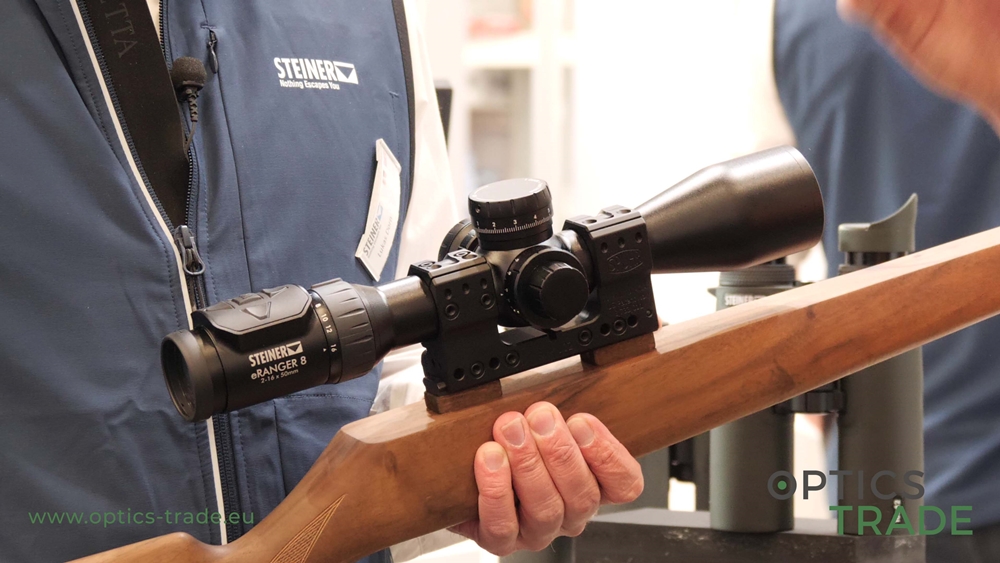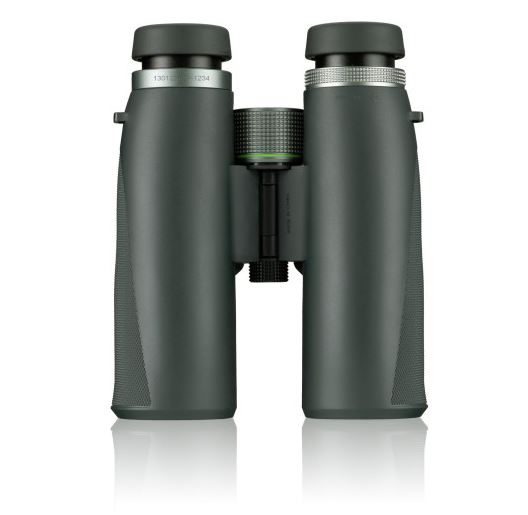Introduction
Before binoculars became the mainstream choice for hiking, bird watching, stargazing, and hunting, there was, and still is, another optical instrument that provides a similar viewing experience, if not the same. The device, which is known as a monocular, gets its name from a singular set of objective and eyepiece lenses which provide visual enhancement for only one eye, unlike a pair of binoculars that contain separate ocular barrels to provide images for both eyes.
Best Monoculars vs Binoculars video presentation:
Monoculars vs Binoculars video
The invention of the first monocular dates back to the early 16th century when a Dutch spectacles manufacturer, Johann Lippershey, submitted a patent for the idea of an optical device that could magnify distant objects up to three times their size using refracting glasses. This device, which was later termed a telescope, set the basis for the monocular we know today. In fact, most people just know them as mini pocket-size telescopes due to their similarity and function. Soon after the invention of the first monocular, scientists explored the idea of using two small telescopes side-by-side to view objects through both eyes instead of just one. In 1825, this was made possible when J. P. Lemiere improved a number of pre-existing binocular devices that were not deemed successful due to their clumsy design and unreliability.
Both binoculars and monoculars share the same working principle and a similar mechanical layout in the placement of eyepieces and objective lenses inside optical barrels. Light rays that reflect from objects enter the optical cavity through the objective lens and form an inverted image at its focal point. This image then passes through a series of prisms and the eyepiece lens before reaching the light receptors in our eyes, forming a bright and crisp image. The only difference is that binocular utilizes both eyes for viewing whereas a monocular uses only one.
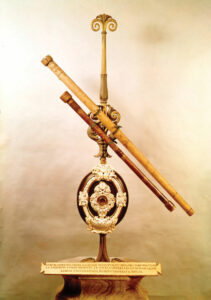
Although monocular devices were one of the most important inventions of their time, many astronomers and hunters favored the dual-eye setting of the binoculars over their single-eyed counterparts. Two-eyed vision is considered superior to the one-eyed visualization provided by monoculars because it projects an enhanced three-dimensional image of objects as well as promises a wider field-of-view since both eyes capture more light.
Regardless of viewing comfort, a consistent number of hunters and other adventurists prefer monoculars over binoculars. Both devices are frequently used during backpacking, hiking, and other exciting journeys, and while binoculars require great care and a special accessories (carrying case) to ensure their safety, the relatively small size and weight of monoculars makes their handling and use a lot easier compared to binoculars – no need for special gear or accessories.
While both instruments might be interchangeably used in most circumstances, monoculars are generally more suitable in situations that do not involve observations of constantly-moving distant objects. Instead, they are great for quick glances at distant objects – getting an idea of the distance to a hole in golf, for example, or when aiming at a target at the shooting competition. Most monocular devices cost significantly less compared to binoculars since they comprise only half a portion of a regular set of binos. With a similar magnification power and lower cost, they are a better deal for some people.
Many people confuse monoculars with spotting scopes because of a similarity in their working principle and design. Although a spotting scope does provide visual enhancement for one eye, it serves an entirely different purpose. While monoculars are designed to be lightweight and compact, spotting scopes are usually larger with superior magnifying power. Enhanced optics including larger lens with a wider field of view make spotting scopes significantly heavier and bulkier than monoculars. They are often used for spotting distant objects from a fixed location, such as birdwatching, target shooting, plane-spotting, and generally, require a tripod stand for a stable and continued viewing experience. Most spotting scopes feature an angled design along with a viewfinder to provide crystal clear and ultra-bright images to the observer. On the other hand, monocular devices come in a straight-tube shape and are used handheld.
Due to the resemblance in characteristics, potential buyers often find themselves making the difficult decision between getting a monocular and binoculars. Even though both binoculars and monoculars are capable of providing clear and sharp images of distant objects, they are better suited for some adventurous activities and might not be a great idea for others.

Comparison features
1. Eyepiece and Objective Lens
Binoculars come with two sets of objective and eyepiece lenses, one set for each barrel. On the other hand, monoculars comprise only one set of two lenses. The size of objective lenses determines the size of binoculars and monoculars. The objective lenses in both monoculars and binoculars are larger than eyepiece lenses to ensure the capture of more reflected light to magnify distant objects and produce brighter images. Since the size of objective lenses in binoculars is greater, they are able to transmit more light in challenging conditions (dusk or dawn) than a monocular, which is best used in daytime bright conditions. The size of objective lens in most monocular devices ranges from 25 mm to 40 mm and in binoculars from 30 mm to 70 mm. Due to the importance of objective size in either device, its diameter is mentioned right in the specification along with magnification.
2. Focusing on Binoculars vs Monocular
Both monoculars and binoculars come with a focus adjustment feature that allows users to switch between distant and nearby objects. Monocular devices have a ring on their main body which can be turned in either direction while looking at an object through their eyepiece to make the objects clearer and focused. Similarly, binocular devices feature either a focus adjustment knob in the center or on both of the two barrels – it works in a similar manner. However, due to the compactness of monoculars, there is a limitation on the range of objects that can be observed through them, while binoculars excel in this department due to their complex design and greater room for mechanical movement.
3. Dioptre settings on Monocular and Binocular devices
Only a small portion of the world’s population has the same eyesight for both eyes. For the rest of the people, the eyesight condition may differ slightly or greatly between both eyes. Just like how regular eyeglasses deal with this, binoculars come fitted with a dioptre mechanism to compensate for the differences in eyesight, so that every time the user needs to use the binocular, they can just concentrate directly on the object without having to worry about anything. Since monocular provides a visual enhancement for only one eye, it does not need dioptre adjustment and consequently, monocular users are free to use their device on either eye.
4. Magnification
The magnification power is an important characteristic of every optical device. It lets us know how much closer the device can bring distant objects that need to be observed. Higher magnification numbers mean the device can be used to view objects at a larger distance. Most commercial optical instruments have a magnification power starting from 8x and go all the way up to 20x, but the greater the magnification power, the more difficult it will be for the user to steadily hold the device, hence, most people stick with either a 8x or 10x magnification for their adventure needs. Due to their intricate design and a larger room for multiple lens, binocular devices generally come in a larger range of magnification power.
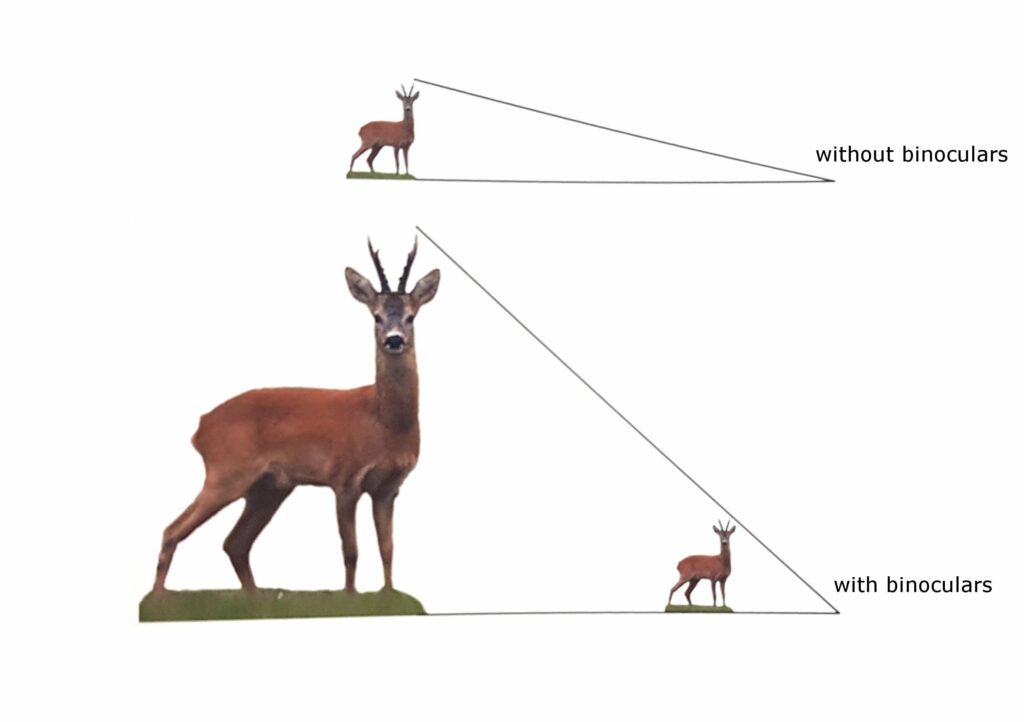
5. Close Focus
The minimum distance at which an optical device can easily focus on is called the close or clear focus. If a person wants to observe distant objects as well as nearer objects up close like a magnifying glass, an optical device with a smaller close focus distance is preferred. Generally, both monoculars and binoculars come with a close focus range from 0.5 to 30 meters, however, a number of specialized monoculars and binoculars are available in the market that are designed to be used on distances shorter than 30 centimeters, but with a compromise on the field of view and adjustable focal length.
6. Eye relief
The distance at which an optical device must be kept from the eyes for a clear view of objects without the vignette effect is known as Eye relief. The eyes need to be within this distance to optimally observe the entire field of view. If they lie outside this distance, the projected view through the device is cropped. This distance is measured in millimeters and usually differs from device to device. Generally speaking, an eye relief of at least 10-15mm is desirable, but a majority of users wear eyeglasses nowadays and it is necessary for their optical devices to have a larger eye relief to accommodate the distance taken up by their spectacles. Both devices come with a range of eye relief values that will suit all kinds of users, but devices with greater magnification require the user to place their eyes as close as possible to the eyepiece lens. If a longer eye relief is a necessity, a compromise on both magnification and field of view is inevitable. Both monoculars and binoculars with longer eye-relief usually feature adjustable eye-cups that rest against your face and allow for a steady view.
Best Eye relief video presentation:
7. Field of view
The field of view in an optical instrument is the size of the territory a person can observe at a time without having to move their device. Monoculars use one objective lens to capture light for producing images for one eye. This results in a relatively narrower field for the user to observe at a time and for viewing other nearby objects, the device needs to be aligned in their direction. This can be further explained by closing one eye and looking at surrounding objects with the other. The view cuts in half, which is quite the case with monoculars. Binoculars, on the other hand, use two objective lenses to capture light and provide visual information through two eyepiece lenses for both eyes, resulting in a greater field of view.

8. Size and Weight of Binocular and Monocular devices
Because of two parallel optical barrels, double the number of lenses, and precise focus adjustment mechanisms, binoculars are always bulkier than a monocular with similar specifications. In fact, most people think of a monocular as half the size of the binoculars. Monoculars are deemed as smaller versions of telescopes that are mostly inflexible and provide limited viewing options compared to binoculars, but they make up for their imperfections with their small size and better handling. The small size of monoculars also accounts for their smaller weight, which permits their users to explore more on long adventure-filled days. On the other hand, a pair of binoculars can easily weigh double compared to a monocular, from 300g to as much as 2 kg, the latter requires a tripod stand to operate effectively.
9. Eye Fatigue
Monocular users often experience tired eyes even after a little usage. This is because the eyes are adjusted to work simultaneously to see things clearly and when only one eye is used for viewing objects through a monocular, it needs to make the best of the situation by moving quickly to get a better field of view and absorb more light to compensate for the second eye. Because of this, monoculars users have to take quick intervals or continually switch between both eyes to have a pleasant viewing experience. This phenomenon is known as eye fatigue and is common among monocular owners. Although binocular users experience fatigue symptoms too, they are less common and only become a problem after excessive observation of moving objects.
Monoculars vs Binoculars Price comparison
The price factor plays an important role in helping potential buyers making a decision between numerous options. Because of their simpler construction, smaller size, and limited functionality, prices for most entry-level monoculars start as low as 20 EUR and they gradually go up as their features, such as quality of glass, a field of view, close focus, magnification, and eye relief improve. The same is true for elementary binoculars – the price depends on the type, magnification power, construction material, quality of lens, lens coating, focus, and dioptre mechanisms. Prices for entry-level binoculars start at 100 EUR and similarly increase as features improve. These elementary devices are quite reasonable for individuals with no prior experience as they are handy and do not require excessive care.
Upping this budget to at least 200 EUR will multiply the number of options in both device segments. Mid-level binoculars and monoculars combine the superior quality of high- class optics with the satisfactory build quality, robust focusing, and dioptre mechanisms that will allow the user to immerse in the surroundings without having to worry about fog and water contamination – almost every device in this category features a nitrogen purged housing. On top of this, they do not cost a fortune and most enthusiasts are able to afford them easily.
For the finest quality of optics, extremely rugged build quality, and features like Argon or Nitrogen – purging, magnesium housing, great resolution, and best low light performance, advanced users may need to opt for binoculars from manufactures, such as Leica, Swarovski, Zeiss, and Steiner. Critical features like the ones listed above require a lot of design considerations and having to adjust them while keeping the size of a device intact is definitely a challenge. These devices are not for regular users and only experienced users will be able to fully utilize all the features that best premium optics brands boast. Prices for premium binoculars start at 1000 EUR and may go up to 3000 EUR depending on the brand and the number of special features. Monoculars are way more affordable, even when made by premium brands.
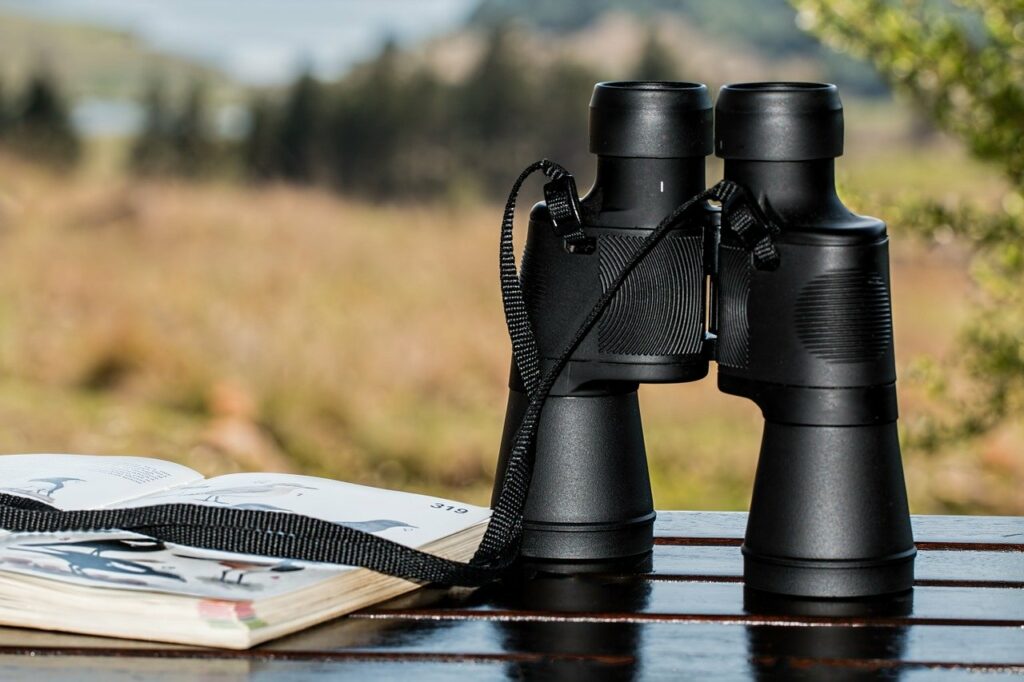
Ease of use
Although humans are more than capable of seeing things through either eye, a two-eyed vision offers a larger field of view encompassing more objects without the need to move the head. Additionally, it provides a spatial 3-dimensional effect when images from both eyes are superimposed over one another in the brain, which is why everyone naturally prefers to use both eyes to observe the surroundings. Binoculars are thus comfortable to use. Having to close one eye while looking through a monocular usually uncomfortable for a lot of people, and a smaller field of view combined with no depth perception makes it worse, which is why certain buyers would always select a cheap binocular over an expensive monocular.
Weight
On the other hand, binoculars are heavier compared to monoculars due to twice the number of lenses, glass prisms, comprehensive focusing, and dioptre systems, and a large housing to accommodate everything. Entry-level binoculars may weigh only about a half of a kilogram, but the addition of powerful optical features will gradually increase their size and weight. Since most straight monoculars do not contain heavy elements and dioptre mechanisms, they are ultra-compact and, therefore, do not weigh even half the weight of typical binoculars, which makes them a better choice for longer uninterrupted viewing.
Lowlight conditions
Binoculars comprise two parallel ocular barrels, each containing a set of objective and eyepiece lens. Two objective lenses ensure more light enters the optical cavity which makes the resultant image brighter compared to monoculars. While this might not make a difference during the day, but in lowlight conditions, such as at dusk or dawn, the ability to capture more reflected light can be a game-changer in some situations.
Monocular vs Binoculars Suitability
Due to the large variety of binoculars available, they are deemed suitable for every setting. Two objective lens guarantee a greater field of view along with brighter images, which is quite effective for lowlight conditions. The intricate focus adjustment system in binoculars ensures precise focus control and a shorter close focus distance.
The dioptre mechanism offers quick eyesight compensation between the two eyes. Multiple convex lenses provide sharp images at much higher magnifications, which is crucial for activities such as looking for distant ships in the sea or observing animals far away. The above features are available in all types of binoculars, even the entry-level ones, which is what makes binoculars appropriate for all kinds of activities.
Alternatively, monoculars pack lightweight and ultra-compact structures, which makes them an attractive and popular choice for users who either do not have enough space to carry bulky binoculars, such as hikers and campers, or those who find it comfortable to use only one eye for viewing objects.
Conclusion
Adventurists and professionals often find themselves making the difficult choice between binoculars and monoculars. While devices come with their advantages and disadvantages, one needs to carefully understand their needs and compare the features of both to choose the appropriate device. Binocular devices are considered superior by many due to their suitability for all kinds of scenarios such as bird watching, stargazing, hiking, boating, plane spotting, and other adventure-packed activities. Monoculars, on the other hand, are thought to be appropriate in situations which do not involve continuous observation of objects due to a well-known condition called “eye fatigue”, which does not allow long uninterrupted views of distant or nearer objects. Some experienced users own both optical devices so that they are well equipped for all kinds of situations.

